1850
16th February –
PLOUGHING COMPETITION.
A highly interesting meeting was held at Marton on Friday the 7th for testing the ploughmen and ploughs, not only of the district but the whole county. The judges were J Outhwaite of Bainesse, B Chapman of Skelton and R Hudson of Loftus. 14 ploughs were entered on the farm of Mr W Dale near the road from Middlesbrough to Marton.
8th June 1850 –
MAIN IRON ORE SEAM DISCOVERED.
John Vaughan and his Mining Engineer, John Marley of Darlington, discovered a 16 feet thick seam of ore at Upleatham Hill, part of the Eston Hills.
The discovery was not pure luck, as has sometimes been recorded. John Vaughan had noticed the greater iron content in some ore that had been obtained from North of Whitby on the East Cleveland coast and had deliberately set out to find its origin.
The following account by Mr Marley of how the seam was traced is taken from J S Jeans’ “Pioneers of the Cleveland Iron Trade”, published in 1875.
“Mr Vaughan and myself, having gone to examine the hills for the most suitable place for boring, we decided to ascend to the East, adjoining Sir J H Lowther’s grounds, and so walk along to Lady Hewley’s grounds on the West.
In ascending the hill in Mr C Dryden’s grounds, we picked up two or three small pieces of ironstone. I need scarcely say that having once found this bed, we had no difficulty in following the outcrop in going westward, without any boring as the rabbit and fox holes therein were plentiful as we went.
We also examined the place in Lackenby Banks squared down in 1811 or 1812 by the Mr Thomas Jackson of Lackenby.
The period from the 8th June 1850, till the middle of August following was occupied in completing arrangements for opening out this Ironstone and the first trial quarry was begun on the 13th August 1850.
A temporary tramway was soon laid down and by the 2nd September 1850 the first lot of seven tons was brought down in small tubs to the highway side, from thence carted to Cargo Fleet and thence again by rail to Witton Park Ironworks being about 3 weeks after actually seeing the ironstone.
By this method 4.041 tones were sent away by the 28th December following.
…..this Ironstone cannot but be an interesting subject, whether they be Mining Engineers, coal owners, iron masters, or simply a part of the public personally disinterested, as I believe that nothing has been discovered, within the last twenty years, having so direct an influence on the landed, railway, and mineral wealth, in the North of England, on the South Durham coal field, and on the iron trade generally, as the discovery and application of this large ironstone district.
I suppose it may now be taken as an admitted fact, that the prosperity or depression of the iron and coal trades regulates, in a very material degree, the prosperity or depression of nearly all other commercial pursuits in the same locality.”
BOLCKOW AND VAUGHAN had recognised early the growing demand for iron that the coming of the railways would bring and the potential of the growing town of Middlesbrough, which, between 1830 and 1838, had been transformed from a hamlet of some 40 persons into a boom area. [Population was 7631 in 1851 and would grow to 58,120 by 1901.]

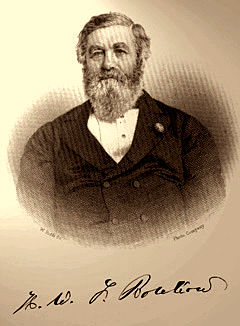
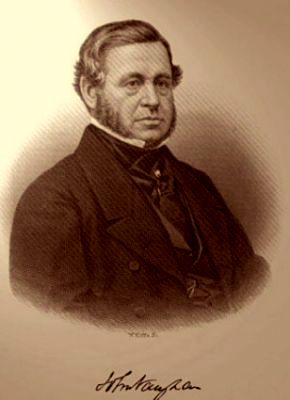
German born Bolckow provided the financial and busines means, while Vaughan had the practical knowledge and management expertise.
In 1841 they had opened a puddling furnace and bar mill in Vulcan Street, manufacturing rails for the Stockton and Darlington Railway Co and in 1843 diversified into marine engineering.
At first they used cheap Scotch pig iron and when, in 1842, ‘railway mania’, and the needs of ship building and the new gas and water companies caused a sudden growth in the iron industry they decided to make their own pig iron.
This sudden growth in demand for pig iron, the raw product from the blast furnace, had driven the price from under £2 to £6 per ton.
They first built works at Witton Park, 20 miles west of Middlesbrough and iron ore which outcropped on the coast was shipped from Whitby to Middlesbrough and thence to the new works for processing.
It then had to be returned to Middlesbrough for finishing.
A depression in the industry in 1847 brought home the wastefulness of this procedure and initiated the search for local iron ore, described above.
Bolckow and Vaughan & Co would go on to lease land from Skelton Castle Estate and open North Skelton and Longacre Mines.
BELL BROTHERS. In the Skelton area the other most notable mine owners were the Bell Bros, who likewise would have iron and steelworks on the River Tees to smelt the ore and owned among other Mines Skelton Shaft and Skelton Park.
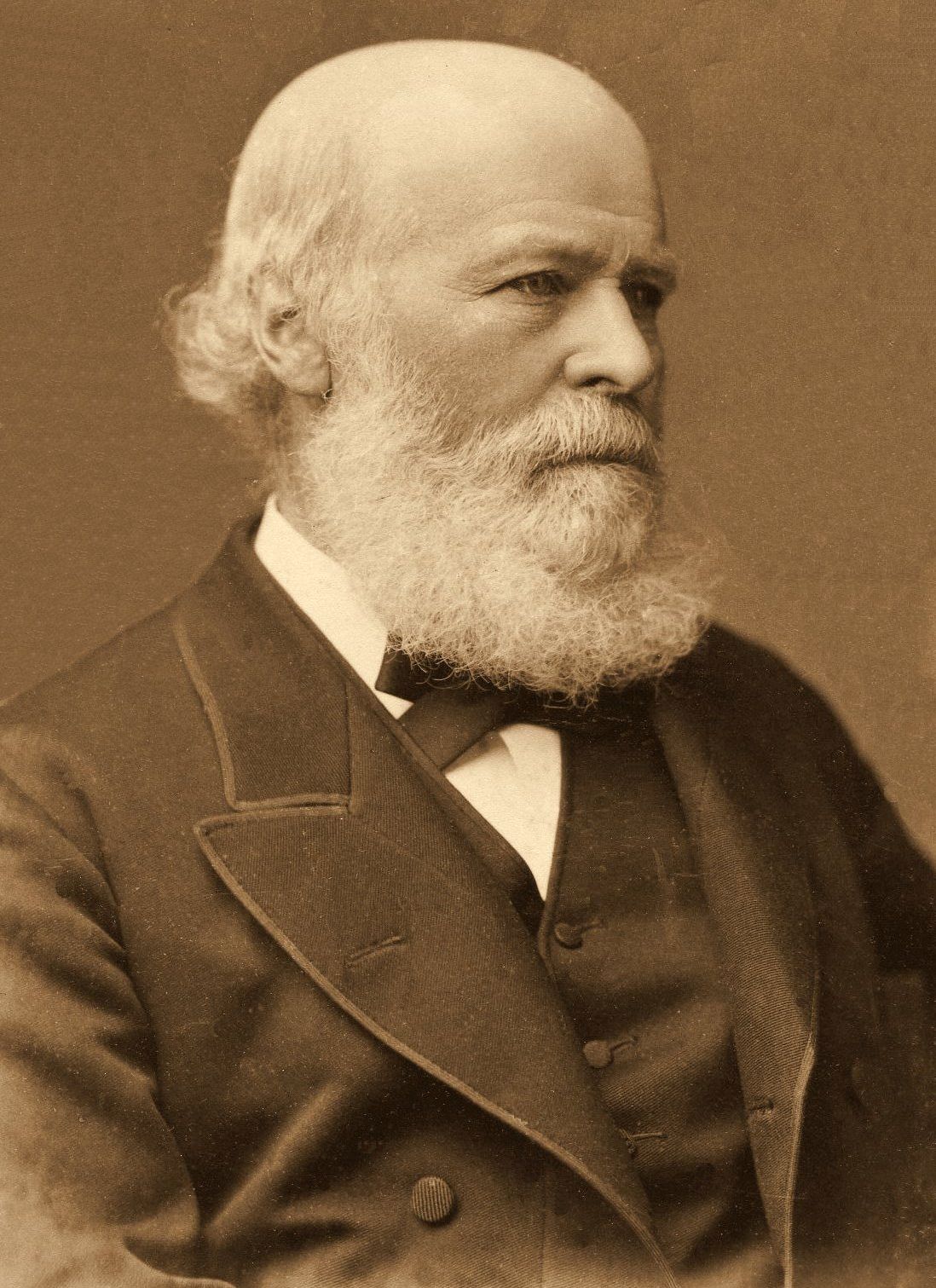
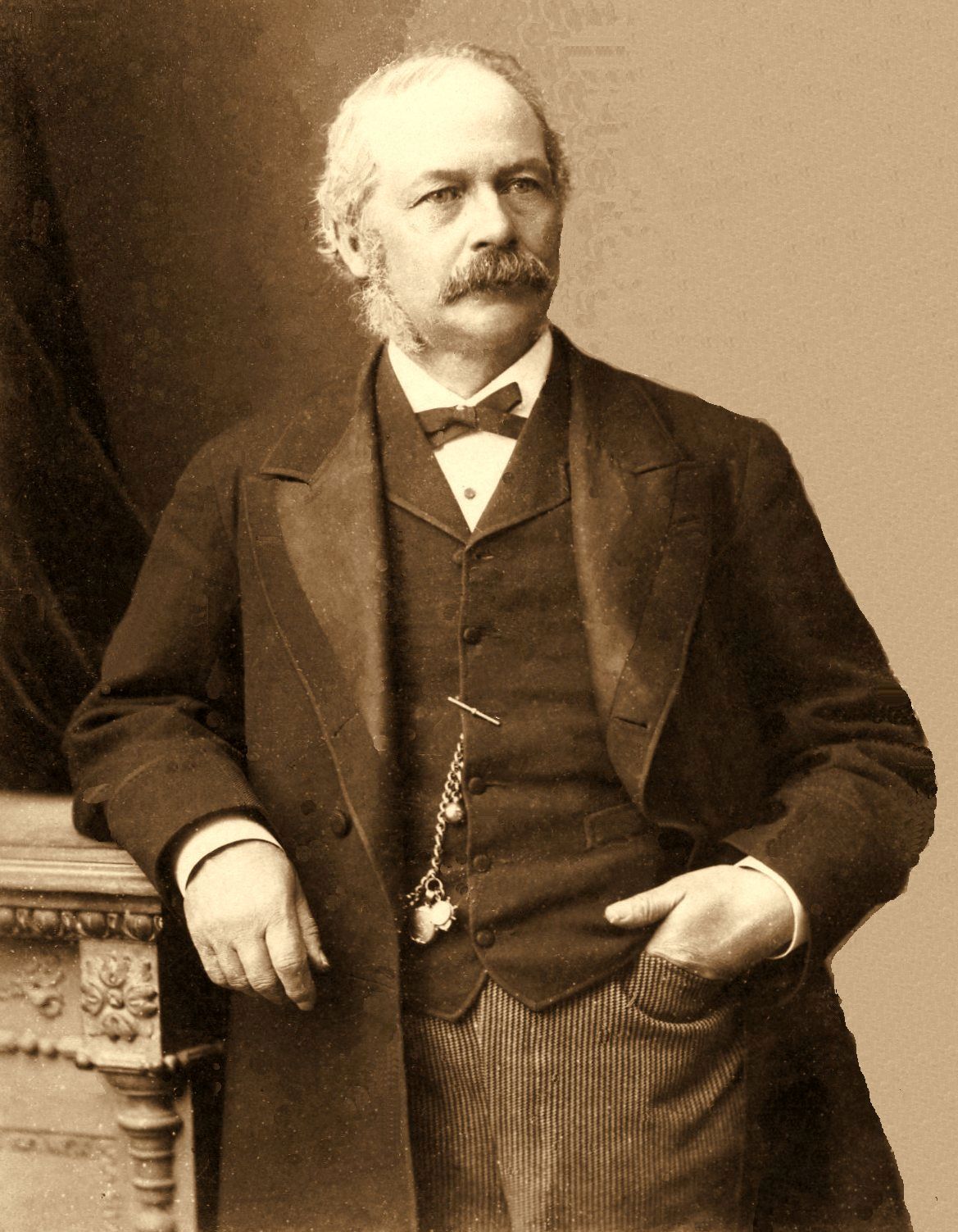
In the next few years the railways would be extended into the Cleveland Hills and agricultural villages, like Skelton, would be invaded by people from all quarters.
Some to work and die in the Mines and trades people of all kinds to feed off their labours.
For the next century this region was to become the nation’s main producer of iron. The consequences, good and bad, are still reverberating.
18th June.
DEATH OF SKELTON PARSON.
The death of the Rev William Close, age 75. Tombstone in Skelton Old Church.
18th August –
SKELTON CASTLE LOAN.
London Gazette. “The Inclosure Commissioners for England and Wales hereby give notice, that applications have been made by the under-mentioned persons, for the advance of the under-mentioned sums, by way of Loan, under the provisions of the Act of the 13th and 14th Vict.31, for the drainage of lands hereunder listed. John Thomas Wharton Esq, for lands in Gilling and Skelton. £5,000.”
1851
7th January –
SKELTON LABOURER PINCHES SPITS – HARD LABOUR.
William Carter, Labourer, was committed to the House of Correction, Northallerton for stealing at Skelton one draining spit value 2s, the property of Thomas Ord; one spade value 2s, the property of Luke Lowe; and one draining spit value 2s, the property of William Robson.
19th February –
CHEMISE AND STOCKINGS PINCHED.
Elizabeth Patton wife of Thomas Patton of Marske, Stonemason, was charged with stealing three brown Holland chair covers, the property of Susan Mary Anne Wharton; one calico chemise and two aprons, the property of Jane Reynolds, and three pairs of stockings, the property of Henry Wilton. Offences committed at Skelton.
Patton had previously been convicted of felony at the Quarter Sessions held at Northallerton on 15 October 1850.
With certificate of conviction at the Quarter Sessions held at Northallerton on 15 October 1850 of Elizabeth Patton late of the House of Correction at Northallerton wife of Thomas Patton for stealing and receiving one gold coin called a half-sovereign, one silver coin called a sixpence, and a silver coin called a four penny piece, the property of Mary Ann Elwood, at the township of Guisborough.
25th February –
HOT COALS – HARD LABOUR.
John Smales, a Servant Labourer, aged 25 of Skelton in Cleveland was charged with stealing one and a half hundredweight of Coals from his Master, John Dixon.
Sentenced to 4 months hard labour in Northallerton Gaol.
16th April –
STRAW THEFT – 2 MONTHS TREADMILL.
Joseph Sherwood, a Labourer of Skelton in Cleveland, charged with stealing 4 Battens of Straw from Codrington Kilburn on the 14th December last.
Guilty and sentenced to 2 months hard labour in Northallerton Gaol.
1st May –
THE GREAT EXHIBITION is held in the Crystal Palace, London till 15th October.
1st November –
QUICK BIGAMY.
Elizabeth Conn, wife of John Conn, Labourer, Loftus, in Cleveland, was brought before J T Wharton of Skelton Castle and charged with having on Saturday the 18th married William Youell of Saltburn in Cleveland, Mariner, her former husband the said John Conn, being then still alive.
It appeared that Elizabeth was married to Conn on Friday the 10th of October at the Parish church, Whitby [by licence] and that on the Saturday week following, she was again married at Skelton Church [also by licence] by the Rev William Close to William Youell.
She signed her name at the second marriage in her single name of Willis. The prisoner was committed to York Castle for trial at the next gaol delivery and allowed bail.
1853
MIDDLESBROUGH was recognised as a Borough.
“By the provisions of its Charter, the Corporation was authorised to have a Common Seal, which could also be used as a Coat of Arms, and its design was entrusted to W Hylton Longstaffe, the Town Clerk of Gateshead.
There can be little doubt that he was the author of that name who wrote “The History and Antiquities of Darlington”, which was published in 1854, and the artist who sketched and described the remains of the Middlesbrough Priory which came to light in 1846 with the demolition of the Middlesbrough Farm House.
As the basis of the Borough Seal, Longstaffe borrowed the blue lion from the arms of Robert de Brus of Skelton, the 12th century founder of the Middlesbrough Priory.
To this, he added ships and anchors to highlight the town’s importance as a seaport, while his use of black in certain details was to denote the significance of coal in relation to its industries.
As far as a motto was concerned, he took further inspiration from the de Brus family, whose own motto was, in the Latin, “Fuimus” (“We have been”), denoting their former glory.
Looking positively to the future, Longstaffe opted for the Latin “Erimus” (“We shall be”).”
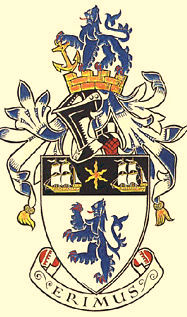
7th May –
NEW CHURCH ORGAN.
The beautiful little church of Skelton, Cleveland has recently undergone several improvements and a new organ built by Mr Postill of York has been presented by J Wharton of Skelton Castle.
12th June –
BIRTH OF THE TALLEST MAN, “THE YORKSHIRE GIANT”.

Henry [Harry] Cooper was born in Norton, near Malton, North Yorkshire.
He grew to the incredible height of 8 feet 6 inches, with 13 inch hands and 17 inch feet.
In his early days he lived in Rosedale, Brotton and North Skelton, no doubt moving with his family and his own work to the Ironstone mines in these places.
He belonged to the Independent Order of Oddfellows, a non-political organisation that supported the ethics of brotherhood and charity, mentioned many times in this website.
He is remembered by folk lore in North Skelton as working in the local Mine with some difficulty, having to descend in a cage that was only some 5 feet high.
Fable has it that he used to light his pipe from the street gas lamps and never used gates and stiles. He just stepped over the fences and hedges.
In those days it was a profitable business for Menageries to display so-called human “freaks” of nature – dwarves, bearded ladies, tattooed ladies, [you can see plenty for free today], hottentots etc for public curiosity and entertainment.
A Menagerie that was visiting Brotton recognised Harry as a profitable prospect and he was shown in Leeds, Bradford, Morecambe and Sunderland
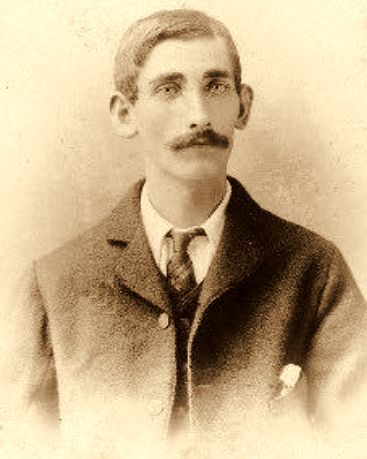
He is remembered as a reserved man.
Eventually he joined the famous:-
“P. T. Barnum’s Grand Traveling Museum, Menagerie, Caravan & Hippodrome”,
and travelled to America.
This is how he ended up in Calgary, Alberta, Canada, where he died, aged 46, in 1899 after a massive failure of his heart, which must have had to work overtime to support such an enormous frame.
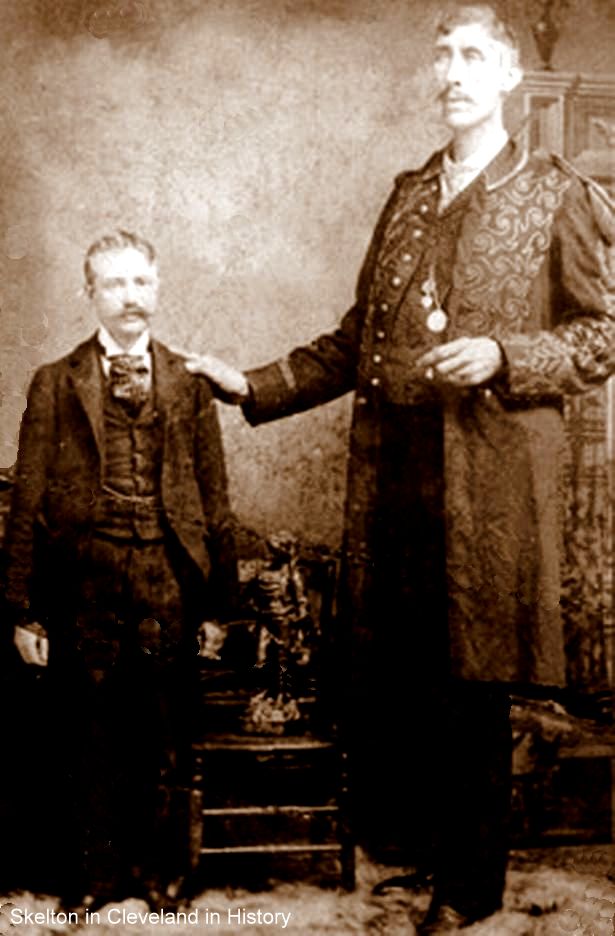
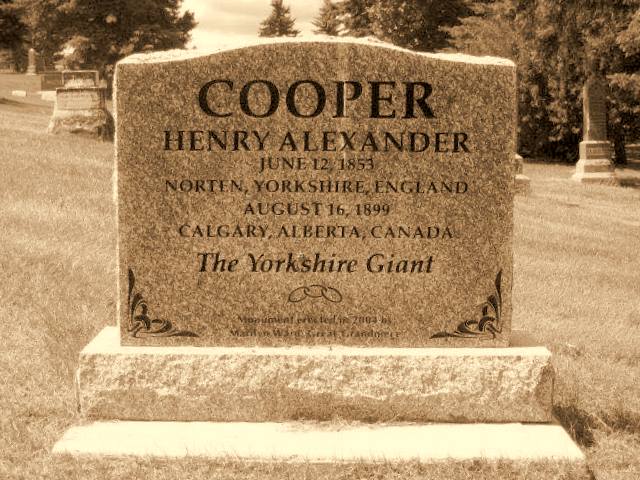
22nd October –
BOOT STEALER TWICE WELL WHIPPED.
At the Michaelmas Quarter Sessions of the Peace for the North-Riding of York held at the Court House, Northallerton, John Fallon was convicted with having stolen a pair of cloth boots, the property of John Temple, at Skelton in Cleveland. He was sentenced to 2 months hard labour and to be twice well whipped.
1854
NEAREST RAILWAY STATIONS.
A railway passenger service started to Guisborough, which was 4 miles away and this remained the nearest station to Skelton until the opening of Saltburn, 2 miles away, in 1861. Followed by Boosbeck in 1875 and Brotton in 1878. It would be 1902 before Skelton had its own.
WHARTON DEATH.
At Skelton Castle, death of Susan Mary Ann Wharton, aged 87, the widow of John Wharton [deceased] who had been MP for Beverley.
She was the daughter of Maj Gen John Lambton of Lambton, Co Durham and with John Wharton had had 2 daughters, Susan and Margaret.
Margaret married Sir Thomas Barrett Lennard, Bart, but died without issue in 1825.
28th March –
CRIMEAN WAR.
Fearing Russian expansion in the Balkans the British, French and Turks declared War on that country. Battles at Sebastopol, Balaclava and Inkerman were fought before Russia was forced to sue for peace and ended with the Treaty of Paris in March 1856.
Many British deaths occurred, more as a result of poor clothing and medical provision than the fighting.
16th December –
FARM ASSAULT.
John Herriman of Skelton, Farm Labourer, was charged with assaulting Stapleton Doughty at that place on the 21st October.
They were fellow Servants with Mr Carr, Farmer of Skelton and had a quarrel over their duties. Fined £1 and £1 costs or 1 month in the Northallerton House of Correction.
16th December –
MARRIAGE FESTIVITIES.
Last Saturday at Marske in Cleveland Church the marriage took place of Mr John Thomas Wharton of Skelton Castle and Miss Yeoman, the daughter of H W Yeoman of ‘Woodlands’ and Marske Hall.
On leaving the church they were met by the tenantry of the Cleveland estates, who escorted them to Marske Hall, a band of music being at the head of the party.
They then cantered away to Skelton, where at the Inns and in a large building at the Castle, an ample feast was provided for them all.
A similar happy party was formed at Marske Hall and dancing was kept up till the following morning
1855
3rd March –
SKELTON RELIEVING OFFICER.
At a meeting of the Guisborough Poor Law Union on Tuesday last, Mr Joseph Parkinson of Skelton in Cleveland was elected by a great majority to the office of Relieving Officer in place of Mr James Bird, who has resigned after faithfully discharging the duties for 18 years.
2nd November.
DEATH OF JOHN ANDREW JNR,
Age 61, of Hunting fame and Smuggling notoriety.
See the year 1835 for more about him.
He was buried in Skelton Churchyard and left six children, Thomas Pressick, Ann, James, George and Mary.
His eldest son Tom took his place as Master of the Cleveland Hunt and remained so until 1870.
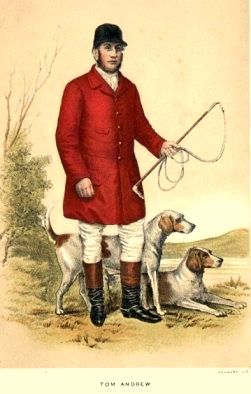
LIVE LONG IN SKELTON.
Records from the burial register of Skelton in Cleveland suggest it was a good place to live long.
“Out of 799 persons buried between 1813 and 1852, no less than 263, or nearly one third,attained the age of 70.
Of these, two were respectively 101. Nineteen others were 90 years of age and upwards.
Between the ages of 80 and 90 there died 109. Between the 70 and 80 there died 133.
In one page of the register, containing 8 names, 6 were above 80 and in another five above 70.
In the Parish of Skelton there was then living a man named Moon. 104 years old, who was blind, but managed a small farm till nearly or quite 100.
And a Blacksmith, named Robinson Cook, aged 98, who worked at his trade until within six months of this age.”
1856
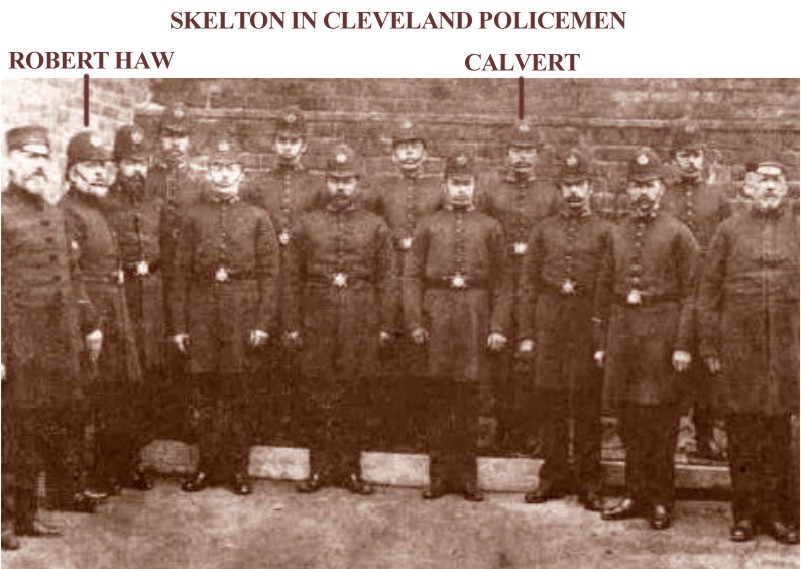
14th October –
THE NORTH RIDING CONSTABULARY was established by the County and Borough Police Act, with initially 51 County police officers.
To police the whole North Riding [some 44 miles by 76] with the exception of Middlesbrough, Scarborough and Richmond, which had their own force.
Many people were against it, saying that it was unnecessary and they did not want any increase of the Rates.
Only serious crimes were recorded to start with and juvenile offenders chastised by a Constable on the spot or taken to their parents for the same.
Within a year there were 106 policemen and 8 Divisions, with the Headquarters for the Skelton area at Northallerton.
Soon as the Railways spread and Mines opened parts of the North Riding like ours would be filled by some hard working, hard drinking Navvies, Labourers and Miners.
The following pages are full of cases of drunkenness and violent assaults that made the lives of Policemen, like the two Victorian Skelton officers shown above, hard and dangerous.
The North Riding Constabulary policed the area until 1968.
See here for more details.
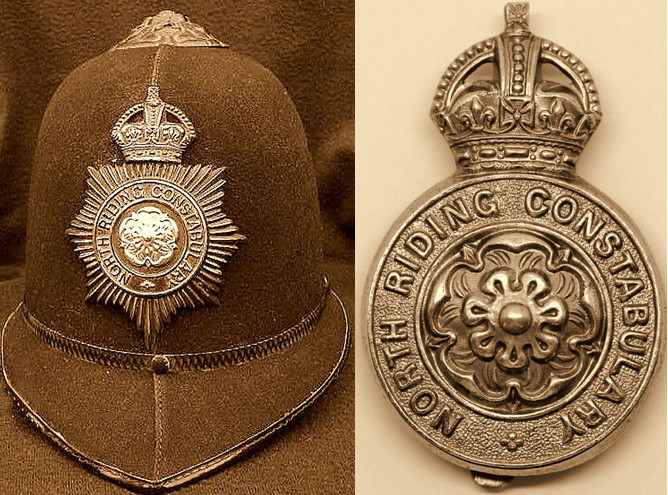
18th October –
ILLEGAL OATS – 3 MONTHS HARD LABOUR.
Thomas Tate, who had been out of custody on bail, was indicted for stealing 3 stooks of oats, the property of Mr Benjamin Chapman, at Skelton, on the 18th of September.
Chapman is a Farmer at Trout Hall and Tate is the occupier of a small portion of land in the same neighbourhood.
A witness swore that he saw Tate remove the oats, but the defence said Tate had led the oats from a head-ridge in his own field.
It was shown that the oats stolen were of a different kind to those in Tate’s field.
Two of the prisoner’s sons were called to prove that Tate could not have been among Chapman’s oats at the time alleged.
The jury found Tate guilty and he was sentenced to 3 months imprisonment with hard labour.
1857
ORDNANCE SURVEY mapped the area.
On the next page is the map of Skelton for this year. Use the scroll bars to pan around it.
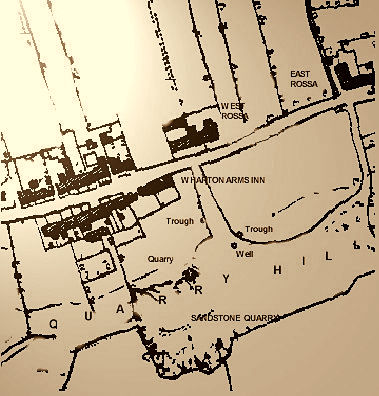
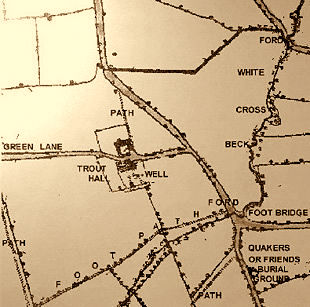
Next Page – 1857 TO 1864
Previous Page – 1850 TO 1857
Contents Page